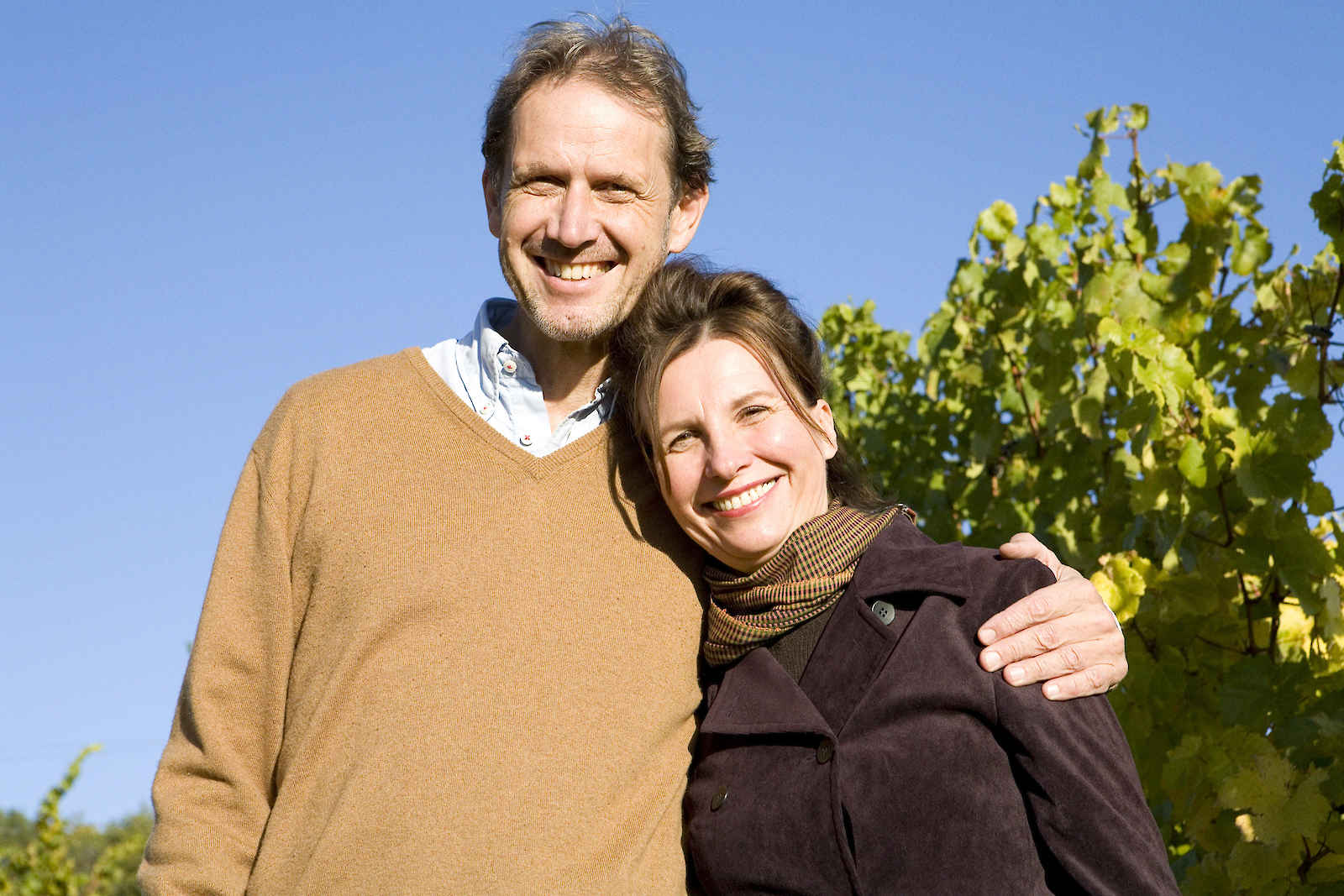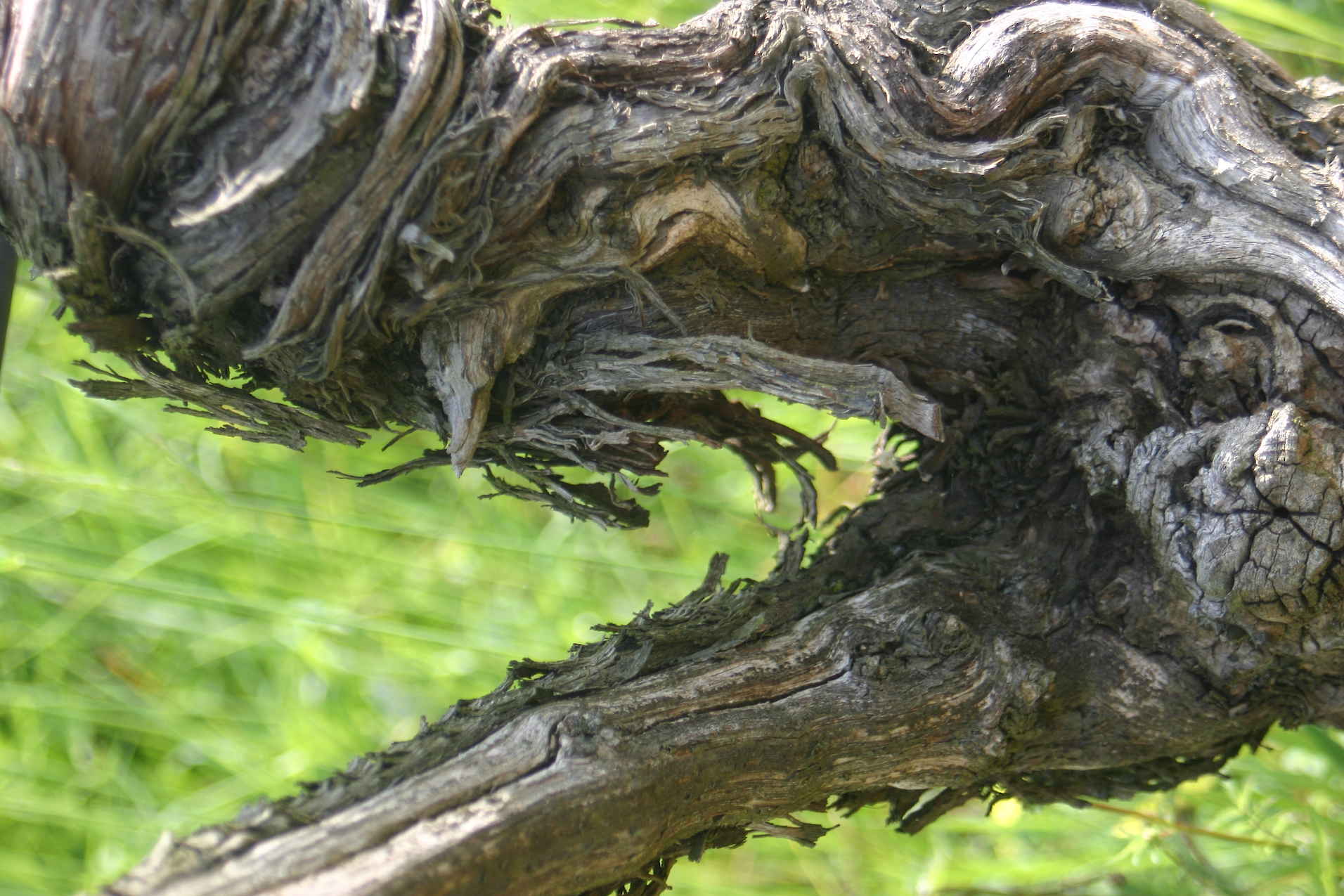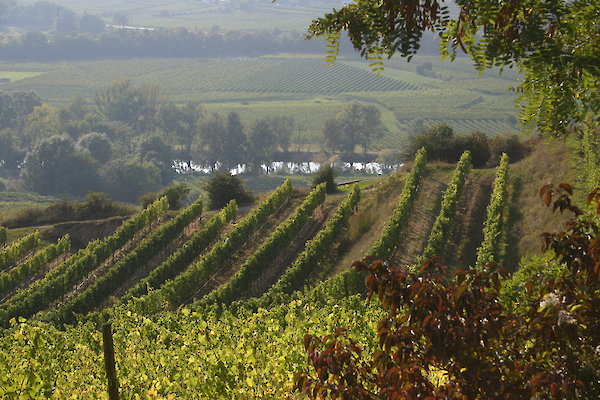
All our activities are focused on promoting the wealth of life, its biodiversity (vegetable genetic material, soil life, natural yeasts): intelligent action – the beauty of simple work processes.
Winery
Vineyard
The mostly terraced vineyards situated far from road traffic are unique in their diversity.

Willi Bründlmayer attaches great importance to the ecological balance:
When he took over his parents’ winery, he introduced a policy of ecological winegrowing. Synthetic fertilizers are waived since 1979. Our vineyards are cultivated sustainably, following the Austrian Programme of Sustainable Agriculture and since 2015 in a biological-organic way, certified by LACON. The management of natural resources – soil, sun, water and plants – follows simple and sensible procedures. For instance, pheromones are applied throughout all important sites of the winery in order to disrupt the mating habits of the dangerous grape vine moth. This means that no additional plant protection agents need to be used against the insect. When old vineyards are cleared, the fields are left fallow, for several years if necessary, so that the soil can recover fully.
Vineyards and Varities
The best sites are to be found where the valley of the Kamp River opens shell-like towards the southerly Danube Valley.
The hills of Krems and Wachau extend to the west, while to the east are the Weinviertel and Vienna.
Situated to the north-east of Langenlois, Heiligenstein is a vineyard of truly mystic intensity which for centuries has been justifiably among the most renowned in Central Europe. The river Kamp curves at its foot, changing direction from north-south to west-east and flowing on into the open Danube Valley.
The soil consists of 250 million-year-old desert sandstone. High on the slope, the finest Riesling grapes ripen in an enclosed nature reserve. Subtle and restrained in their first years, with bottle maturation they become powerful dry wines which can attain an almost biblical age.
Young vines from these sites are blended to create the Kamptal Terrassen.
The two neighbouring vineyards, Loiserberg and Berg Vogelsang, stand for absolutely classic, brilliant, mineral wines, grown on granite (mica-schist).
Ried Käferberg also has a substratum of poor, primary rock, covered with clayey marine deposits that impart additional strength and density to the wine. These and other vineyards enable us to develop the very best characteristics of our white and red grapes.
Ried Lamm vineyard is the eastern spur of the Heiligenstein, so the substratum consists of numerous fissures and cracks interstratified with Permian deposits. But there is also a lime-rich clay bed which gives the wine additional warmth, strength and body.
Selection of Vine Training System
Choosing the right grapevine training system is of great importance for the maximisation of quality. Willi Bründlmayer sets his vines just above the ground so that the grapes can benefit from the heat of the soil – heat storage and reflection of light as well as heat through the stones – yet high enough so that the vines are not spattered by the wet soil during storms.

The Lyre System
In some of the vineyards the vines are cultivated according to the lyre system, with the vine branches cut and trained so that they extend heavenwards like two sun-worshipping arms. This more or less doubles the sunlit and aired foliage surface and improves grape quality. The well-aired leaves also dry faster, thus reducing risk of the dreaded grape mildew.
All our activities are focused on promoting the wealth of life, its biodiversity (vegetable genetic material, soil life, natural yeasts): intelligent action – the beauty of simple work processes.
Gentle Pruning
For a number of years now, we have been applying the gentle pruning method of Simonit & Sirch in our vineyards. Behind the names Simonit & Sirch are the innovators and pioneers of the gentle vine pruning system – Marco Simonit and Pier-Paolo Sirch, two agronomists from Friuli in Italy.
After the death of a vast amount of vines in Friuli in the 1980s, the two specialists developed a new method from existing cutting techniques, in which no large wounds were inflicted on the vine, and the sap flow remained undisturbed. Care is taken to ensure that there are no “dead spaces” in the old wood of the vine – which could be the entrance points for the fungi diseases. This would help to reduce, for example, the danger of esca, a current disease that affects the wood of the vine and is most likely the greatest threat to vineyards today.
 In our vineyards, the vines can be “ancient” – the oldest are more than 90 years of age. And we want them to grow to 100, 120, perhaps even more than 150 years old! The wine from old vines is particularly balanced and rich in character!
In our vineyards, the vines can be “ancient” – the oldest are more than 90 years of age. And we want them to grow to 100, 120, perhaps even more than 150 years old! The wine from old vines is particularly balanced and rich in character!
Grüner Veltliner
The most important grape
Our most important varietal is Grüner Veltliner, which has its home in the vineyards around Langenlois. Its name in an old dialect “Mauhardsrebe” refers to the Manhardsberg, a mountain ridge bordering the Waldviertel with the villages of Langenlois and Zöbing lying to the south.
The Grüner Veltliner displays an incredible diversity of character, ranging from pleasant “light and dry” (L+T) to the most complex classified vineyard wines (crus) such as Käferberg or Lamm. Hardly any other variety expresses so well the character of a classified vineyard.
“The Lamm is a perfectly vinified wine with incredible body and freshness. Willi Bründlmayer probably has the best Grüner Veltliner in Austria.”Olivier Poussier, French Sommelier World Champion
Riesling
Traditionally, our Riesling grows well on poor rocky soils, particularly in the Steinmassel and Heiligenstein vineyards. We aspire towards crystal-clear, dry wines with a nose and body that continuously remind the drinker of their origin, of the vineyards, their unique soil, of the warm summer days and the cool nights, drenched in the perfume of the acacia blossoms and the peach trees surrounding the vineyards.
Burgundy varieties, Chardonnay and Muskateller
The climatic conditions in the Kamp Valley are also eminently suitable for Burgundy varieties (Pinot Gris, Blanc and Noir, Chardonnay). The dry, healthy air prevents rotting of the grapes in a natural manner, permitting their full expressiveness as a result of a later harvesting date. Every year, Pinot Blanc and Pinot Gris grapes are used to produce the Langenloiser Spiegel cru, an ideal food accompaniment which has been a permanent fixture on numerous wine lists for many years.
The Chardonnay is aged in 300-litre barrels of domestic oak. Grapes from high-lying wine slopes impart fragrance and finesse, while terraces near the valley give strength and warmth.
In the Kamptal, Gelber Muskateller (White Muscat) has a long tradition as part of the traditional mixed plant (“Gemischter Satz”). It contributed lively fruit and attractive aroma. 1997 we reintroduced Gelber Muskateller after a break of some decades. The small vineyards are on the sites Steinmassel and Spiegel.
Red Wines & Rosé
Red grapes make up an important part of our vineyards. Years ago, Willi Bründlmayer acquired several original parcels from the Zweigelt family.
These, together with the great Pinot Noir varietal, which matures well in wind-protected “top crus” such as Dechant or Käferberg, and the native St. Laurent, form the three pillars of our red wine production.
Moreover, owing to climate change, we have already tasted success with heat-resistant, later ripening grapes. The most promising results have been achieved with Cabernet Franc, though Merlot, too, has delivered beautiful grapes. The freshest and lightest red wine grapes are used for Rosé and Brut Rosé.













